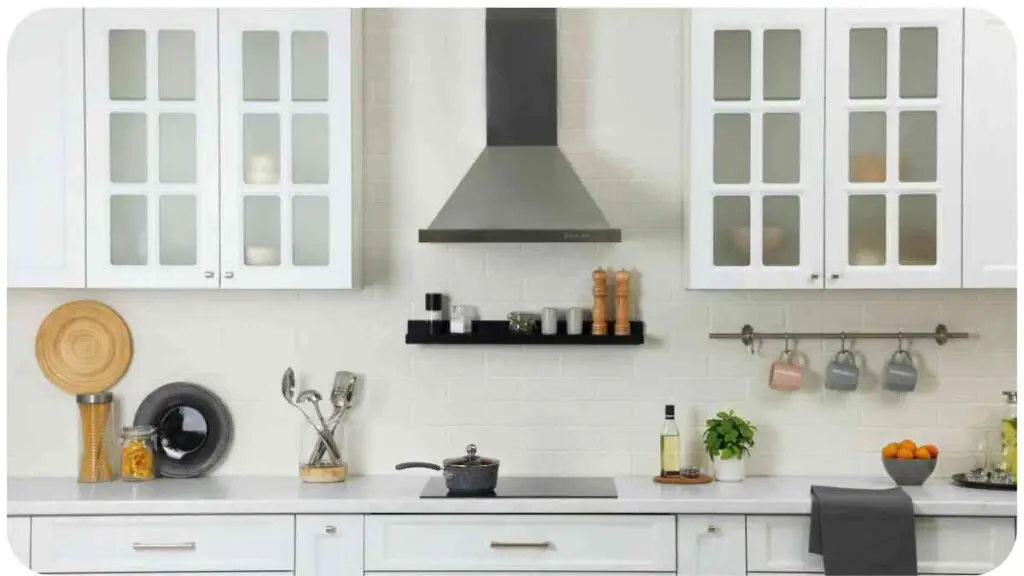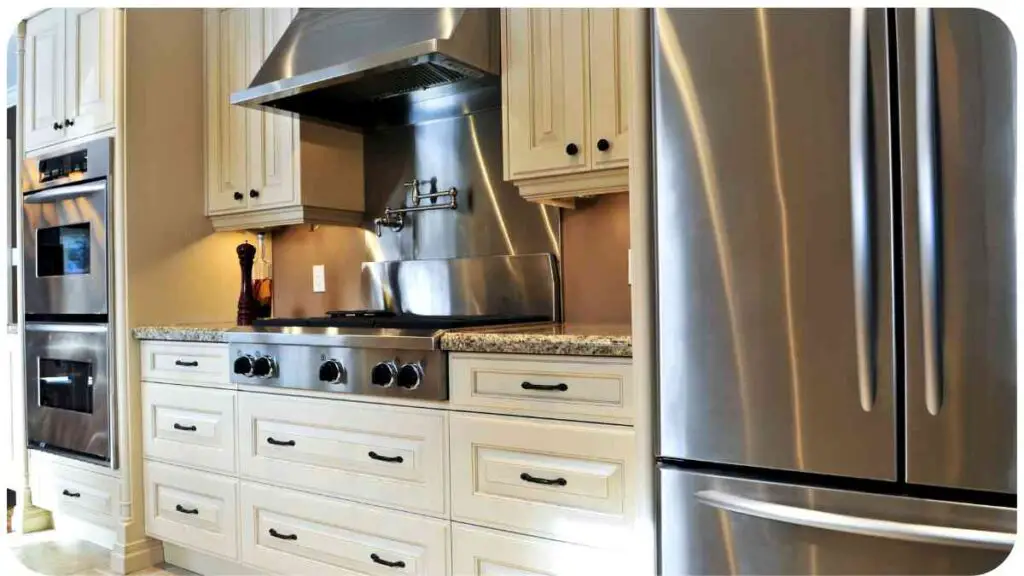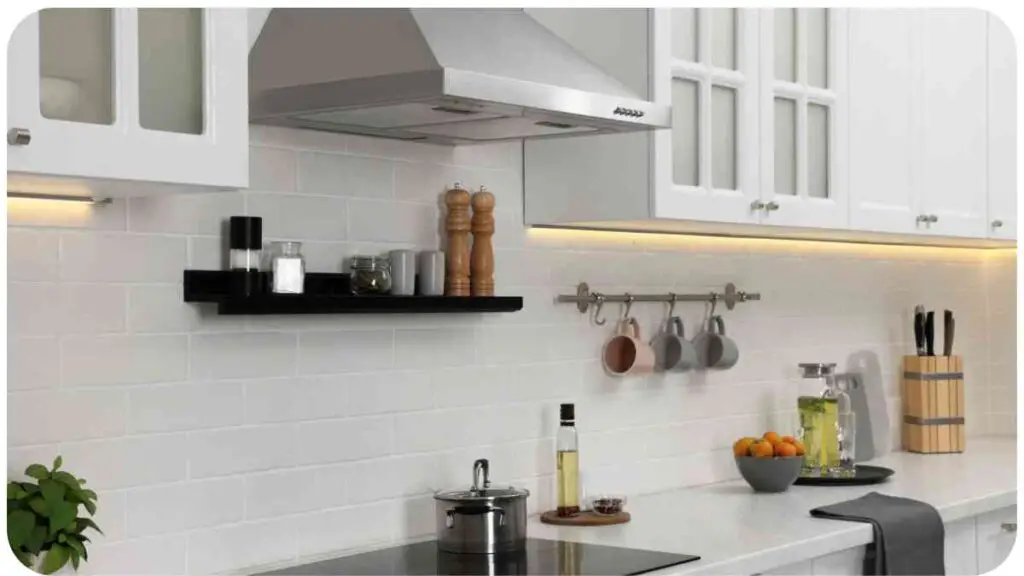Welcome to our guide on troubleshooting common kitchen exhaust fan problems! A malfunctioning kitchen exhaust fan can lead to a variety of issues, from poor ventilation to unpleasant odors lingering in your home.
In this comprehensive article, we’ll explore the importance of kitchen exhaust fans, identify signs of a malfunction, delve into common problems, and provide practical troubleshooting tips.
| Takeaways |
|---|
| 1. Importance of Ventilation: Kitchen exhaust fans play a vital role in maintaining a healthy indoor environment by removing smoke, grease, and odors. |
| 2. Signs of Malfunction: Recognize signs like lingering odors, poor airflow, unusual noises, and vibrations as indicators of a malfunctioning fan. |
| 3. Common Problems: Explore issues such as a fan not turning on, weak airflow, loud noises, vibrations, and inefficient odor removal. |
| 4. Troubleshooting Tips: Address problems by checking the power supply, cleaning or replacing filters, inspecting and lubricating fan blades, and handling motor issues. |
| 5. Professional Help: Know when to seek professional assistance for persistent issues or extensive problems with electrical, motor, or ductwork components. |
| 6. Upgrading Options: Consider upgrading your kitchen exhaust fan for improved features, such as smart controls, variable fan speeds, and energy-efficient design. |
| 7. Regular Maintenance: Adopt regular maintenance practices to ensure optimal fan performance, including filter cleaning, blade inspection, and professional ductwork inspection. |
| 8. Importance of Ventilation: Emphasize the significance of adequate ventilation for healthier indoor air quality, reduced moisture, enhanced comfort, and increased energy efficiency. |
| 9. Energy Efficiency Tips: Implement energy-efficient practices in your kitchen, such as using energy-efficient appliances, optimizing natural lighting, and upgrading to LED lighting. |
| 10. Conclusion: Prioritize a well-functioning kitchen exhaust fan for a healthier and more efficient kitchen environment. |
2. Importance of Kitchen Exhaust Fans

Kitchen exhaust fans play a crucial role in maintaining a healthy indoor environment by removing cooking byproducts such as smoke, grease, and odors. Proper ventilation not only improves air quality but also prevents the buildup of harmful pollutants. Let’s dive into why these fans are essential for any kitchen.
Table: Benefits of Kitchen Exhaust Fans
| Benefit | Description |
|---|---|
| Smoke Removal | Eliminates smoke produced during cooking, enhancing visibility. |
| Grease Control | Prevents the accumulation of grease on surfaces, reducing fire hazards. |
| Odor Elimination | Efficiently removes cooking odors, keeping your home smelling fresh. |
| Moisture Regulation | Reduces excess humidity, preventing mold growth and structural damage. |
| Air Quality Improvement | Enhances overall indoor air quality by eliminating pollutants. |
3. Signs of a Malfunctioning Exhaust Fan
Before we delve into specific problems, it’s essential to recognize signs indicating that your kitchen exhaust fan may be malfunctioning. Be attentive to the following indicators:
- Lingering Odors: If cooking odors persist long after you’ve finished, it may indicate an issue with your exhaust fan.
- Smoke Accumulation: Inadequate smoke removal during cooking is a clear sign of a malfunction.
- Poor Airflow: Weak airflow or no airflow at all suggests a problem that needs attention.
- Unusual Noises: Loud, strange, or persistent noises while the fan is running may signal underlying issues.
- Vibrations: Excessive vibrations can indicate imbalances or loose components.
Now that we’ve highlighted the signs, let’s explore the common problems that can affect kitchen exhaust fans.
4. Common Kitchen Exhaust Fan Problems

4.1. Fan Not Turning On
One of the most frustrating issues is a kitchen exhaust fan that refuses to turn on when needed. This problem can result from various factors, including electrical issues or a malfunctioning switch.
Table: Troubleshooting Fan Not Turning On
| Problem | Possible Cause | Troubleshooting Tips |
|---|---|---|
| Fan not responding to switch | Faulty switch or wiring | Check for tripped circuit breakers. Inspect and replace faulty switches. Ensure proper wiring connections. |
4.2. Weak Airflow
Insufficient airflow can compromise the effectiveness of your kitchen exhaust fan, allowing odors and pollutants to linger. Let’s explore the potential causes and effective troubleshooting tips.
Table: Troubleshooting Weak Airflow
| Problem | Possible Cause | Troubleshooting Tips |
|---|---|---|
| Clogged or dirty filters | Reduced air passage | Regularly clean or replace filters to maintain optimal airflow. |
| Blocked ductwork | Obstructions in the duct system | Inspect and clear any obstructions in the ductwork. Consider professional duct cleaning if needed. |
| Inefficient fan speed setting | Incorrect settings | Adjust the fan speed settings to ensure optimal airflow for your cooking needs. |
| Motor issues | Reduced fan performance | Refer to the motor troubleshooting tips in section 5.4. |
4.3. Loud or Strange Noises
Unusual noises from your kitchen exhaust fan can be both annoying and indicative of underlying issues. Let’s explore the potential problems and how to address them.
Table: Troubleshooting Loud or Strange Noises
| Problem | Possible Cause | Troubleshooting Tips |
|---|---|---|
| Loose or damaged fan blades | Imbalances or damage | Inspect and tighten or replace loose or damaged fan blades. |
| Motor issues | Malfunctioning motor | Refer to the motor troubleshooting tips in section 5.4. |
| Foreign objects in the fan | Obstructions in the fan | Carefully inspect and remove any foreign objects lodged in the fan. |
4.4. Vibrations
Excessive vibrations from your kitchen exhaust fan can be a sign of imbalances or loose components. Let’s explore potential causes and effective troubleshooting tips.
Table: Troubleshooting Vibrations
| Problem | Possible Cause | Troubleshooting Tips |
|---|---|---|
| Imbalanced fan blades | Uneven distribution of weight | Balance the fan blades by adjusting or adding weights as needed. |
| Loose components | Poor installation or wear | Inspect and tighten any loose components in the fan assembly. |
| Motor issues | Malfunctioning motor | Refer to the motor troubleshooting tips in section 5.4. |
4.5. Inefficient Odor Removal
If your kitchen exhaust fan is failing to efficiently remove cooking odors, it’s crucial to address the problem promptly. Let’s explore the potential causes and effective troubleshooting tips.
Table: Troubleshooting Inefficient Odor Removal
| Problem | Possible Cause | Troubleshooting Tips |
|---|---|---|
| Clogged or dirty filters | Reduced odor absorption | Regularly clean or replace filters to enhance odor removal. |
| Inadequate ventilation | Insufficient airflow | Refer to the troubleshooting tips in section 5 to enhance overall ventilation. |
| Ductwork issues | Blockages or leaks | Inspect and clear any blockages or leaks in the ductwork. Consider professional duct inspection if needed. |
5. Troubleshooting Tips for Kitchen Exhaust Fans
Now that we’ve identified common kitchen exhaust fan problems, let’s dive into practical troubleshooting tips to address these issues effectively.
5.1. Check Power Supply
Problem: Fan Not Turning On
Possible Causes:
- Faulty switch or wiring.
Troubleshooting Tips:
- Check for tripped circuit breakers.
- Inspect and replace faulty switches.
- Ensure proper wiring connections.
5.2. Clean or Replace Filters
Problem: Weak Airflow or Inefficient Odor Removal
Possible Causes:
- Clogged or dirty filters.
Troubleshooting Tips:
- Regularly clean or replace filters to maintain optimal airflow.
- Enhance odor removal by keeping filters clean.
5.3. Inspect and Lubricate Fan Blades
Problem: Loud or Strange Noises, Vibrations
Possible Causes:
- Loose or damaged fan blades.
- Imbalanced fan blades.
Troubleshooting Tips:
- Inspect and tighten or replace loose or damaged fan blades.
- Balance the fan blades by adjusting or adding weights as needed.
5.4. Addressing Motor Issues
Problem: Fan Not Turning On, Weak Airflow, Loud Noises, Vibrations
Possible Causes:
- Malfunctioning motor.
Troubleshooting Tips:
- Inspect the motor for visible damage or irregularities.
- If issues persist, consult a professional for motor repair or replacement.
5.5. Ductwork Inspection
Problem: Weak Airflow, Inefficient Odor Removal
Possible Causes:
- Blocked or leaky ductwork.
Troubleshooting Tips:
- Inspect and clear any obstructions or leaks in the ductwork.
- Consider professional duct cleaning or inspection for a more thorough assessment.
Now that you have a comprehensive set of troubleshooting tips, it’s essential to know when to seek professional help.
6. When to Seek Professional Help
While many kitchen exhaust fan issues can be addressed through DIY troubleshooting, there are instances where professional intervention is necessary. If you encounter the following scenarios, it’s time to call in the experts:
- Persistent electrical issues.
- Severe motor malfunctions.
- Extensive ductwork problems.
- Inability to identify or resolve the root cause of the problem.
In the next section, we’ll explore the option of upgrading your kitchen exhaust fan for enhanced performance.
7. Upgrading Your Kitchen Exhaust Fan

If you find that your current kitchen exhaust fan is consistently underperforming or outdated, it might be worth considering an upgrade. Modern exhaust fans come with advanced features such as:
Table: Features of Modern Kitchen Exhaust Fans
| Feature | Description |
|---|---|
| Smart Controls | Remote operation and scheduling for convenience. |
| Variable Fan Speeds | Adjust the fan speed based on cooking needs. |
| Energy-Efficient Design | Lower energy consumption for cost savings. |
| Improved Odor Removal | Enhanced technology for efficient odor elimination. |
| Easy Maintenance | Accessible components for simplified cleaning and upkeep. |
8. Regular Maintenance Practices
Maintaining your kitchen exhaust fan through regular care and upkeep is key to preventing common problems and ensuring optimal performance. Consider incorporating the following practices into your routine:
Table: Regular Maintenance Practices
| Practice | Frequency |
|---|---|
| Clean or replace filters | Monthly |
| Inspect fan blades for damage or imbalance | Every 3 months |
| Check for loose components | Every 6 months |
| Lubricate fan motor if applicable | Annually |
| Professional duct inspection and cleaning | Every 2-3 years |
By adhering to a consistent maintenance schedule, you can extend the lifespan of your kitchen exhaust fan and minimize the likelihood of encountering issues.
9. Importance of Adequate Ventilation
Beyond troubleshooting problems, it’s crucial to emphasize the overall importance of adequate kitchen ventilation. Proper ventilation not only maintains air quality but also contributes to a healthier living environment. Consider the following benefits:
Table: Benefits of Adequate Kitchen Ventilation
| Benefit | Description |
|---|---|
| Healthier Indoor Air Quality | Reduces the risk of respiratory issues and allergens. |
| Reduced Moisture and Mold Growth | Prevents mold and mildew, safeguarding your home’s structure. |
| Enhanced Comfort and Safety | Creates a more comfortable and safer cooking environment. |
| Increased Energy Efficiency | Optimizes energy use, leading to potential cost savings. |
| Extended Lifespan of Appliances | Helps appliances, including your kitchen exhaust fan, last longer. |
10. Energy Efficiency Tips
Incorporating energy-efficient practices into your kitchen can benefit both the environment and your wallet. Consider these tips for a greener kitchen:
Table: Energy Efficiency Tips
| Tip | Description |
|---|---|
| Use energy-efficient appliances | Choose appliances with high ENERGY STAR ratings. |
| Optimize natural lighting | Utilize natural light during daytime hours to reduce reliance on artificial lighting. |
| Cook with lids on pots and pans | Retain heat and reduce cooking times, saving energy. |
| Upgrade to LED lighting | Replace incandescent bulbs with energy-efficient LED alternatives. |
| Unplug unused kitchen gadgets | Save energy by unplugging gadgets when not in use. |
By adopting these energy-efficient practices, you can contribute to a more sustainable kitchen while enjoying potential cost savings.
11. Conclusion
In conclusion, addressing common kitchen exhaust fan problems requires a combination of proactive maintenance, troubleshooting skills, and, when needed, professional assistance. By understanding the importance of ventilation, practicing regular maintenance, and embracing energy-efficient habits, you can ensure a healthier and more efficient kitchen environment.
Remember, a well-functioning kitchen exhaust fan not only enhances air quality but also contributes to the overall comfort and safety of your home. If issues persist or if you’re considering an upgrade, don’t hesitate to seek professional advice.
Here’s to a well-ventilated and enjoyable kitchen experience!
Further Reading
Here are some additional resources to explore common kitchen exhaust fan problems and solutions:
- Electrical Discounted Supplies: This website provides in-depth troubleshooting tips for extractor fans, offering insights into common problems and practical solutions.
- Kitchen Services: Visit this site for a comprehensive guide on kitchen range hood problems and their solutions. It covers a wide range of issues related to kitchen ventilation.
- Hood Filters Blog: Explore troubleshooting tips for commercial kitchen ventilation systems in this blog. It offers valuable advice for maintaining and troubleshooting ventilation in a commercial setting.
FAQs
How often should I clean or replace the filters in my kitchen exhaust fan?
Regularly clean or replace the filters on a monthly basis to ensure optimal airflow and efficient odor removal.
What are common signs of a malfunctioning kitchen exhaust fan?
Common signs include lingering odors, smoke accumulation, poor airflow, unusual noises, and vibrations during operation.
Can I troubleshoot a kitchen exhaust fan that is not turning on?
Yes, you can troubleshoot issues with a kitchen exhaust fan not turning on by checking for tripped circuit breakers, inspecting the switch, and ensuring proper wiring connections.
Is there a recommended frequency for inspecting fan blades and lubricating the motor?
Inspect fan blades every three months for damage or imbalance. If applicable, lubricate the motor annually to maintain smooth operation.
How can I enhance the overall energy efficiency of my kitchen?
To enhance energy efficiency, consider using energy-efficient appliances, optimizing natural lighting, cooking with lids on pots and pans, upgrading to LED lighting, and unplugging unused kitchen gadgets when not in use.

Hellen James is the author of the blog and a licensed plumber with over 15 years of experience. She shares her knowledge and experience in plumbing and drainage through insightful and informative articles

